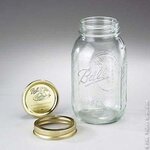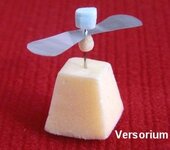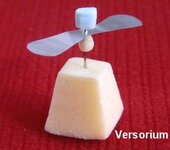aarthrj3811
Gold Member
Radiodynamometer
How to make this instrument is at http://forum.treasurenet.com/index.php/topic,113685.100.html
Reply 114.
This is the book where I got the information about the Radiodynamometer
Biophysical Experiments on the Radiation of Matter, Divining Rods, Electric Waves
By Dr. Paul E. Dobler, Ph.D
http://www.rexresearch.com/dobler/dobler.htm
http://www.minimum.com/b.asp?a=biophysical-experiments
This instrument was made by Dr Dobler to measure emissions from objects that he called Millivolts….Later they were put into a category call X-Band Waves. As near as I can tell they are called Terahertz Waves by Scientist to day…After I posted the information in reply # 114 I receive a bunch of negative replies. That only makes me work harder.
Terahertz Waves
http://www.jhuapl.edu/newscenter/aplnews/2004/june-terahertz.asp
Surfing the Terahertz Waves
From Mines to Cancer, Radiation Band Offers Better Detection
http://www.swri.edu/3pubs/ird2004/Synopses/149405.htm
http://www.thznetwork.org/wordpress/index.php/archives/266
http://www.laserfocusworld.com/articles/article_display.html?id=253682
http://www.nature.com/news/2004/041115/full/news041115-11.html
Simple wire picks up terahertz waves
'Coat-hanger' probes could boost airport security.
Mark Peplow
· Tools
o Send to a Friend
o Reprints & Permissions
o RSS Feeds
After years of fiddling around with plastic ribbons and exotic fibres, physicists have found that a simple metal wire is all they need to pick up terahertz radiation. The discovery could speed the development of new medical and security imaging.
How to make this instrument is at http://forum.treasurenet.com/index.php/topic,113685.100.html
Reply 114.
This is the book where I got the information about the Radiodynamometer
Biophysical Experiments on the Radiation of Matter, Divining Rods, Electric Waves
By Dr. Paul E. Dobler, Ph.D
http://www.rexresearch.com/dobler/dobler.htm
http://www.minimum.com/b.asp?a=biophysical-experiments
This instrument was made by Dr Dobler to measure emissions from objects that he called Millivolts….Later they were put into a category call X-Band Waves. As near as I can tell they are called Terahertz Waves by Scientist to day…After I posted the information in reply # 114 I receive a bunch of negative replies. That only makes me work harder.
Terahertz Waves
http://www.jhuapl.edu/newscenter/aplnews/2004/june-terahertz.asp
Surfing the Terahertz Waves
From Mines to Cancer, Radiation Band Offers Better Detection
http://www.swri.edu/3pubs/ird2004/Synopses/149405.htm
http://www.thznetwork.org/wordpress/index.php/archives/266
http://www.laserfocusworld.com/articles/article_display.html?id=253682
http://www.nature.com/news/2004/041115/full/news041115-11.html
Simple wire picks up terahertz waves
'Coat-hanger' probes could boost airport security.
Mark Peplow
· Tools
o Send to a Friend
o Reprints & Permissions
o RSS Feeds
After years of fiddling around with plastic ribbons and exotic fibres, physicists have found that a simple metal wire is all they need to pick up terahertz radiation. The discovery could speed the development of new medical and security imaging.









